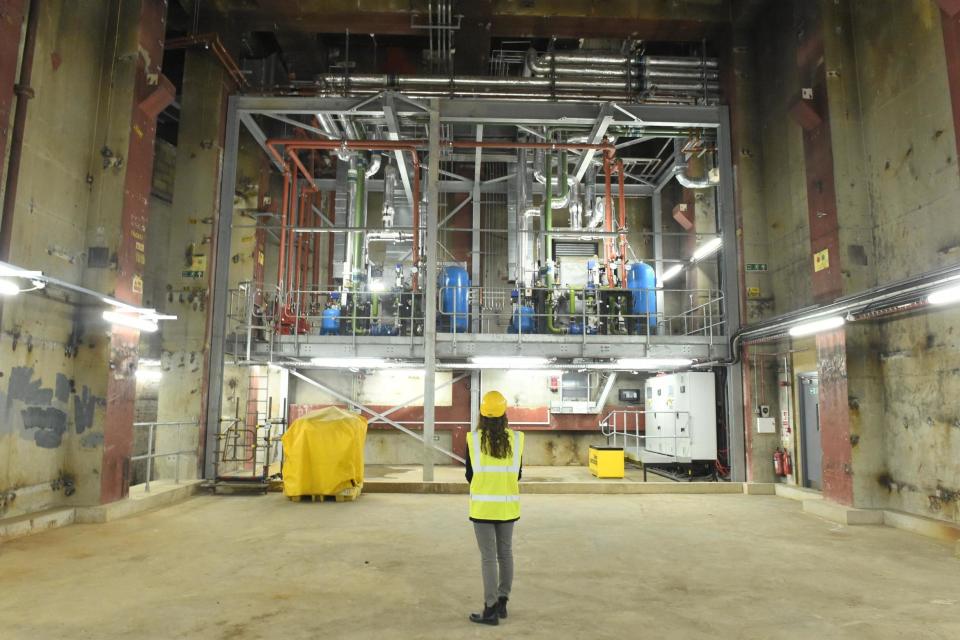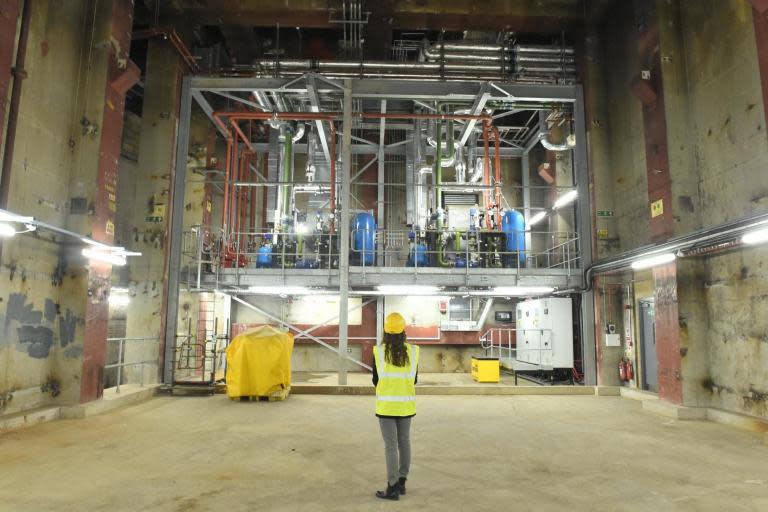Inside the £26m bunker powering the City from down below
Deep beneath central London, a hi-tech power plant in a former meat warehouse is helping drive down the environmental impact of London’s growing energy addiction.
The Standard was given a tour of the Citigen generator as nearly 150 landmarks and famous buildings in the capital prepare to go dark tomorrow night to mark Earth Hour.
Four storeys down, the £26 million E.ON plant generates enough electricity annually to boil two billion cups of tea, enough cold water to run 42,000 fridges, and enough hot water to fill 70 million baths. The site — below the Port of London Authority building in Charterhouse Street — produces power for 11,300 homes and provides heat to 17 commercial buildings in the Square Mile through a network of tunnels.
It is unique because electricity created by gas turbines generates heat as a by-product instead of it needing to be created separately.
The site also creates chilled water for air conditioning. In the basement, water is heated to over 100C, while on the roof huge chiller units cool it down. The bunker was originally used for storing meat at Smithfield Market and drawings for the PLA building, which dates from 1908, measure distances in the number of carcasses per square foot.
In the Eighties it was fitted out with two coal-powered 350-tonne ship diesel engines. Later it was refurbished by E.ON, which installed two 8.6-megawatt, 53-tonne higher-efficiency gas-powered generators. These are so large the equipment had to be brought down in pieces and reassembled underground. The refurbishment was completed in 2016.
John Armstrong, E.ON’s head of operations: “There are more residential and office developments looking for a lower-carbon energy. In future, there will be more electricity generation locally.”
Between 8.30pm and 9.30pm tomorrow landmarks including the Shard, Buckingham Palace, City Hall and the Emirates Stadium will turn out their lights for an hour to mark the World Wildlife Fund’s Earth Hour.
Londoners are asked to pledge to “make one change in their own lives to reduce their environmental footprint”, such as reducing the amount of meat they eat or not using plastic cutlery.

 Yahoo News
Yahoo News 

